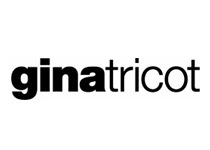Gina Tricot
Accessories / Active Wear / Apparel / Bags / Denim / Jewelry / Swimwear / Underwear & Lingerie
As Scandinavia's fastest growing fashion retailer for women, Gina Tricot will achieve a turnover of SEK 2.5 billion in 2012. It is shared across about 175 stores in five countries and extensive onl...
As Scandinavia's fastest growing fashion retailer for women, Gina Tricot will achieve a turnover of SEK 2.5 billion in 2012. It is shared across about 175 stores in five countries and extensive online sales. The success was made possible by our own designs and short lead times, but above all by an exceptionally high turnover speed, i.e. the industry term for how short a time a garment is available in the store. All decisions are made on a daily basis at the head office in Borås. Since setting up in 1997, our strength has been to make the most of a simple approach, both in our design and our concepts. We offer affordable fashion to all women regardless of age, and we work constantly to make a visit to Gina Tricot a new and exciting shopping experience. Every weekday new designs are sent to our stores. Each week, the way in which we display our products and trends is modified. No matter how often our customers return they will find new garments and trendy fashion in our stores. Logistics is one of the keys to our expansion. We do not engage in stock-keeping, which means that our garments are distributed from the factory to the store without an intermediate stage. The ability to harmonise production and sales means that we can quickly change our range and always offer newly designed garments at a low price. In this way we can keep our promise to give customers loads of fashion at a small cost.Brand Details
Founder
Jörgen Appelqvist
Brand Strategy
Market segment
Mass Market
Core business
Apparel
Targets
Women
Gina Tricot Latest News
Gina Tricot Reaches Iceland
Gina Tricot is expanding its physical footprint outside Sweden, opening its first retail stores in Iceland. The two stores will open in Reykjavik and Akureyri.
Gina Tricot Financial Report 2024
Last fiscal year ended on December 31, 2020
